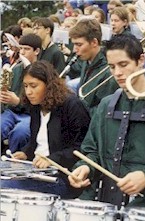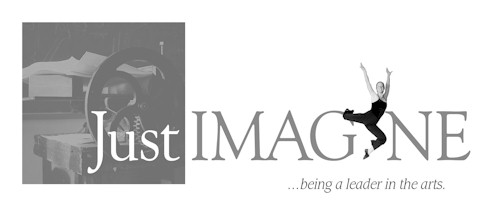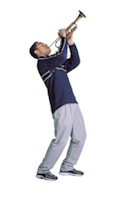Susan O. Grayson, '67
Alumna and Trustee


|
When we teach a child to draw, we teach him how to see. When we teach a child to play a
musical instrument, we teach her how to listen. When we teach a child to dance, we teach
him how to move through life with grace. When we teach a child to read or write, we teach
her how to think. When we nurture imagination, we create a better world, one child at a
time.
Susan O. Grayson, '67
|
 |
In the not-too-distant past, art programs were taught by one teacher; the Academy now has three studio art teachers who teacher such courses as Drawing and Painting, Anatomy and Figure Drawing, Design and Composition, Fashion Art, and Advanced Placement Studio Art. There are also courses in sculpture, photography, and audio-visual production.The expansion in studio art programs has been matched by similar growth in music and the dramatic arts. In the 1960's, the Academy had a marching band and a glee club. Today, with two full-time music faculty, the Academy boasts two marching bands, a jazz band, a swing band, and several smaller ensembles. Vocal musicians enjoy much more than the glee club of days past. The Academy now includes a women's and men's chorus, as well as a freshman group, and the talented a cappella Hilltones. Courses in music theory, music appreciation, and instrumental lessons complete the music offerings.
Thirty-five years ago, the Drama Club staged one major production annually plus a one-act play. Today, Academy Theatre involves more students than any other activity on campus and has six advisors. They produce two major dramas each year, along with at least a half-dozen one-act plays. In fact, this year an Introduction to Theater course was offered, and it was fully subscribed on the first day.
That these courses and programs have been offered in the face of serious physical space limitations and adversity is admirable and speaks well for the dedication of the faculty and the commitment and interest of the students. Fine arts offerings, students, and faculty are scattered throughout the campus and more often than not housed in cramped and/or inadequate facilities.

Music organizations and instrumentalists suffer from a lack of practice rooms and rehearsal space large enough to accommodate the entire chorus. There is little space for instrument storage.
The studio art teachers teacher in separate buildings in classrooms that were designed for academic subjects, not studio art. Ceilings are too low and plumbing is inadequate. Some courses must be taught off-campus or at night for lack of space. There is no space for art supplies storage. Much more important, there is no dedicated space for the display of student art.
The theater course and drama programs can use Fuller Hall only after school. Fuller cannot be used during the day because hundreds of students continually cross Fuller to get to and from Severance and Colby. That distraction makes it impossible to work concurrently on a theater production.

| History and Mission | Center for the Arts | Increase Endowment | Upgrade Information and Technology Networks | How Can I Help? | HOME |